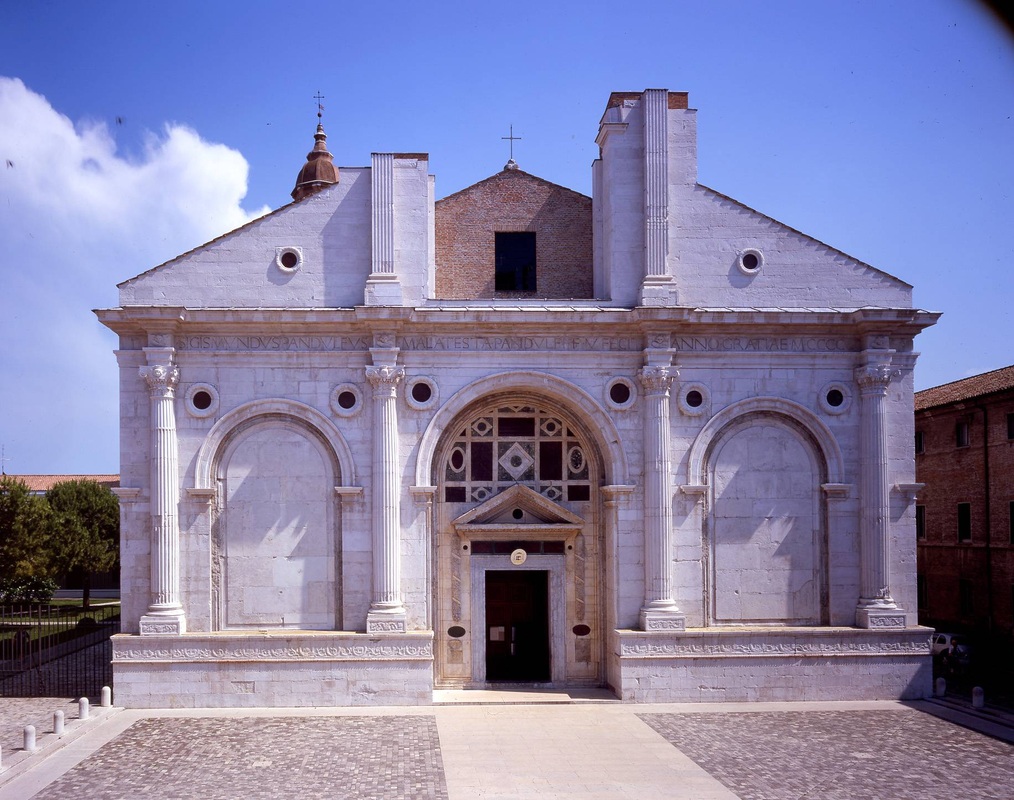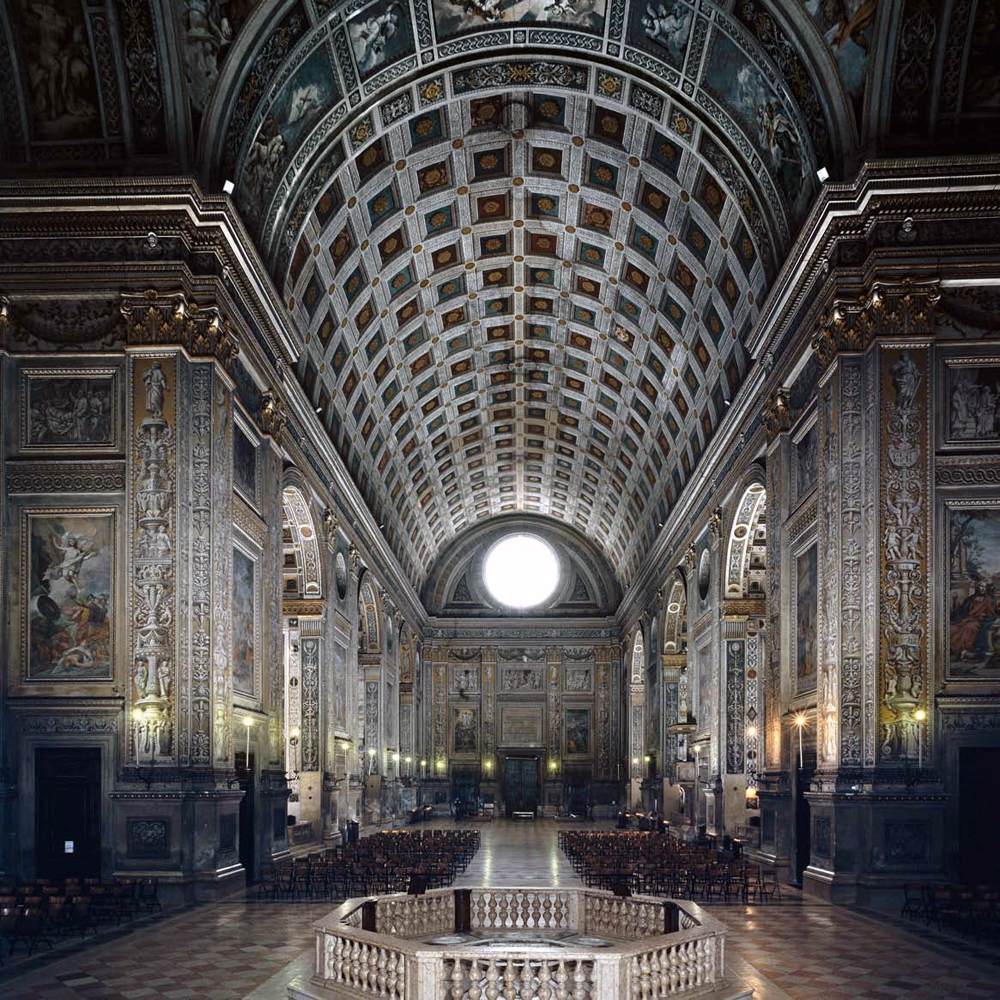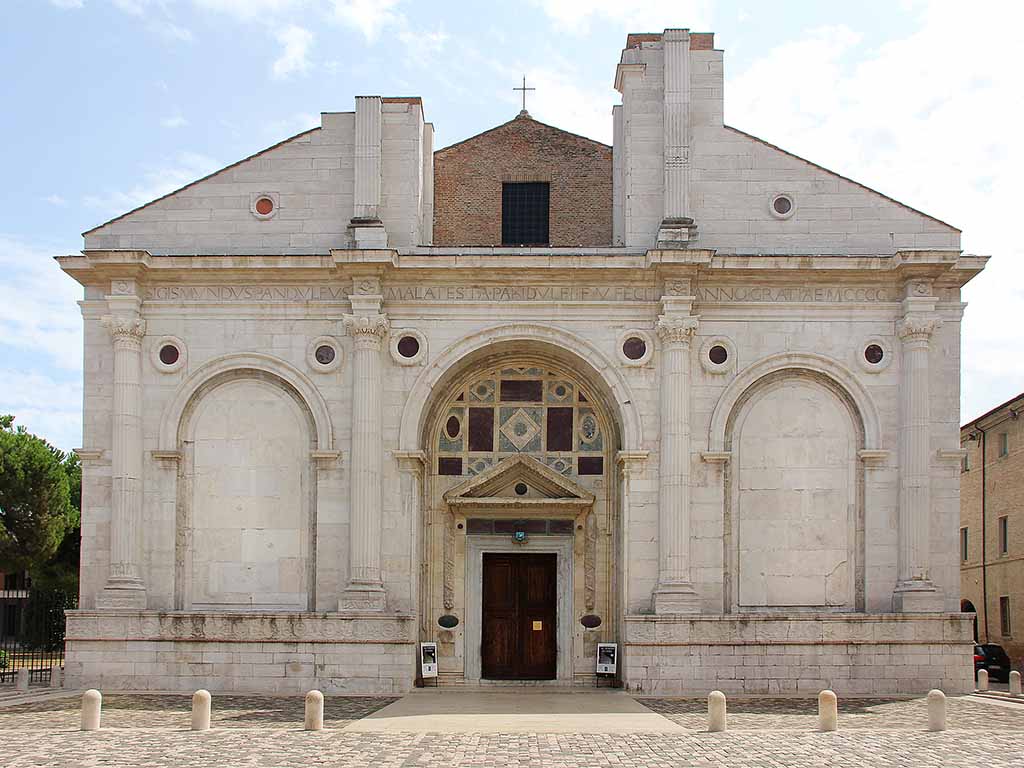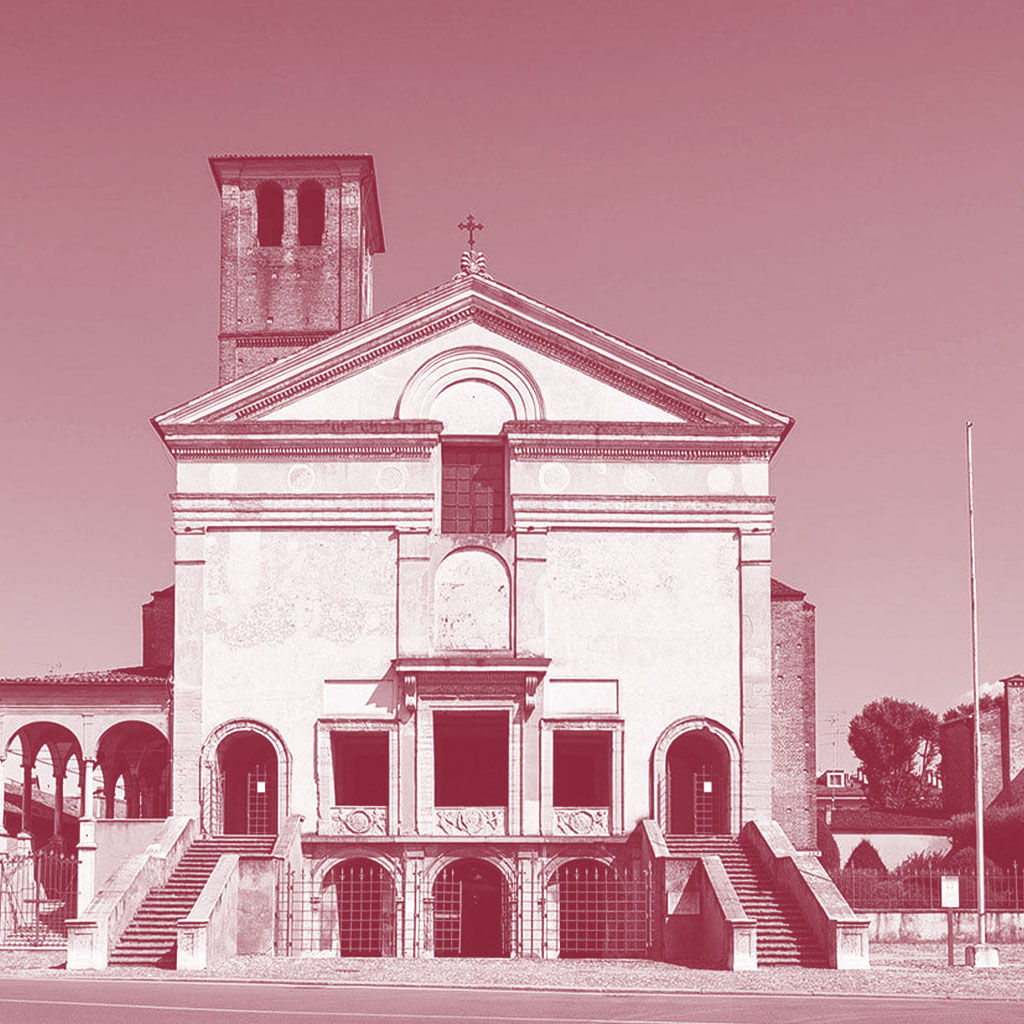
Leon Battista Alberti, Tempio Malatestiano Rimini, 1450 Rimini
The facade of the Tempio Malatestiano church in Rimini. It was designed by the Italian Renaissance architect Leon Battista Alberti (1404-1472 CE). Mid-15th century CE. Its design is influenced by the triumphal arch of ancient Rome.

Alberti's Work LEON BATTISTA ALBERTI
The Tempio Malatestiano ( Italian: Malatesta Temple) is the unfinished cathedral church of Rimini, Italy. Officially named for St. Francis, it takes the popular name from Sigismondo Pandolfo Malatesta, who commissioned its reconstruction by the famous Renaissance theorist and architect Leon Battista Alberti around 1450. [1] History

Leone Battista Alberti Tempio Malatestiano.jpg Sztuka renesansu
Tempio Malatestiano, Cathedral of Rimini is one of artworks by Leon Battista Alberti. Artwork analysis, large resolution images, user comments, interesting facts and much more.. He did not spare the funds of Malatesta and invited to design the temple of Leon to Battista Alberti, who after his death Brunelleschi could be considered the first.

Tempio malatestiano, ri, facciata, capitello Leon Battista Alberti
Alberti Leon Battista Alberti (1404-1472) worked as an architect from the 1450s onward, principally in Florence, Rimini, and Mantua.. His facades of the Tempio Malatestiano (Rimini, 1450) and the Church of Santa Maria Novella (Florence, 1470) are based on Roman temple fronts. His deep understanding of the principles of classical.

Tempio Malatestiano, Leon Battista Alberti, Rimini, 1453 Architettura
Malatesta hired architect Leon Battista Alberti to build a mausoleum for himself and his wife, Isotta degli Atti. The result was an elaborate and highly decorative monument to this couple, whose initials are emblazoned all over the Tempio Malatestiano. These changes were particularly detested by Pope Pius II, who virulently condemned them.

Spencer Alley Alberti, Donatello, Ammanati
Applying Classical arithmetic techniques to analyze Alberti's Tempio Malatestiano, this paper demonstrates that its design corresponds to Alberti's system based on geometrical features of the cube depicting 'natural relationships that cannot be defined as numbers'.. Leon Battista Alberti as Author of Hypnerotomachia Poliphili. Nexus.

Tempio Malatestiano Façade by ALBERTI, Leon Battista
Tempio Malatestiano, burial chapel in Rimini, Italy, for Sigismondo Pandolfo Malatesta, the lord of the city, together with his mistress Isotta degli Atti and the Malatesta family.. 1446, from the Gothic-style Church of San Francesco according to the plans of the Early Renaissance Florentine architect Leon Battista Alberti. Construction was.

Leon Battista, Alberti, tempio malatestiano, dal 1450, Rimini Palace
'Tempio Malatestiano (Rimini)' was created in 1450 by Leon Battista Alberti in Early Renaissance style. Find more prominent pieces of architecture at Wikiart.org - best visual art database.

Leon Battista Alberti Sant'Andrea (1472 1494) Novověk
Il Tempio malatestiano, usualmente indicato dai cittadini come il Duomo e dal 1809 divenuta cattedrale col titolo di Santa Colomba [1] [2], è il principale luogo di culto cattolico di Rimini.

Il Tempio Malatestiano di Leon Battista Alberti Villegiardini
The Tempio Malatestiano (as it became known) was a deeply serious building, evoking the power and severity of Ancient Roman architecture.

Leon Battista Alberti, il Tempio Malatestiano 145054
Leon Battista Alberti (1404-1472 CE) was an Italian scholar, architect, mathematician, and advocate of Renaissance humanism. Alberti famously wrote the treatise On Architecture where he outlines the key elements of classical architecture and how these might be reused in contemporary buildings.

Leon Battista Alberti Tempio Malatestiano (EN Malatesta Temple
Leon Battista Alberti was born in 1404 in Genoa, the hometown of his mother, Bianca Fieschi, widow of a Grimaldi. His father, Lorenzo di Benedetto Alberti, belonged to a wealthy, powerful family of Florentine merchants and bankers, exiled by their rivals, the Albizi. After a short stay in Venice, the Alberti family went to Padua (1416) where.

Leon Battista Alberti San Francesco, Rimini
Leon Battista Alberti Mantova Museo Urbano Diffuso In 1925, it was reopened and inaugurated as a Famedio by Benito Mussolini, following works by the engineer Andrea Schiavi. While it may have.

Rimini, Tempio Malatestiano Rimini italy, Rimini, Italy
Italian Architect, Artist, and Author Born: February 14, 1404 - Genoa, Italy Died: April 25, 1472 - Rome, Italy Movements and Styles: Early Renaissance Leon Battista Alberti Summary Accomplishments Important Art Biography Influences and Connections Useful Resources

MACA Tempio Leon Battista Alberti Musei Civici Mantova
In Spring 1461, after the foundation works had been completed, it was a close colleague of Alberti's, the engineer Giovanpietro Figino, who carried on with.

Tempio Malatestiano (Rimini), 1450 Leon Battista Alberti
Leon Battista Alberti Leon Battista Alberti, self-portrait plaque, bronze, c. 1435; in the National Gallery of Art, Washington, D.C. (more) The achievement of Leon Battista Alberti testifies to the formative power and exhaustive scope of earlier Italian humanism.